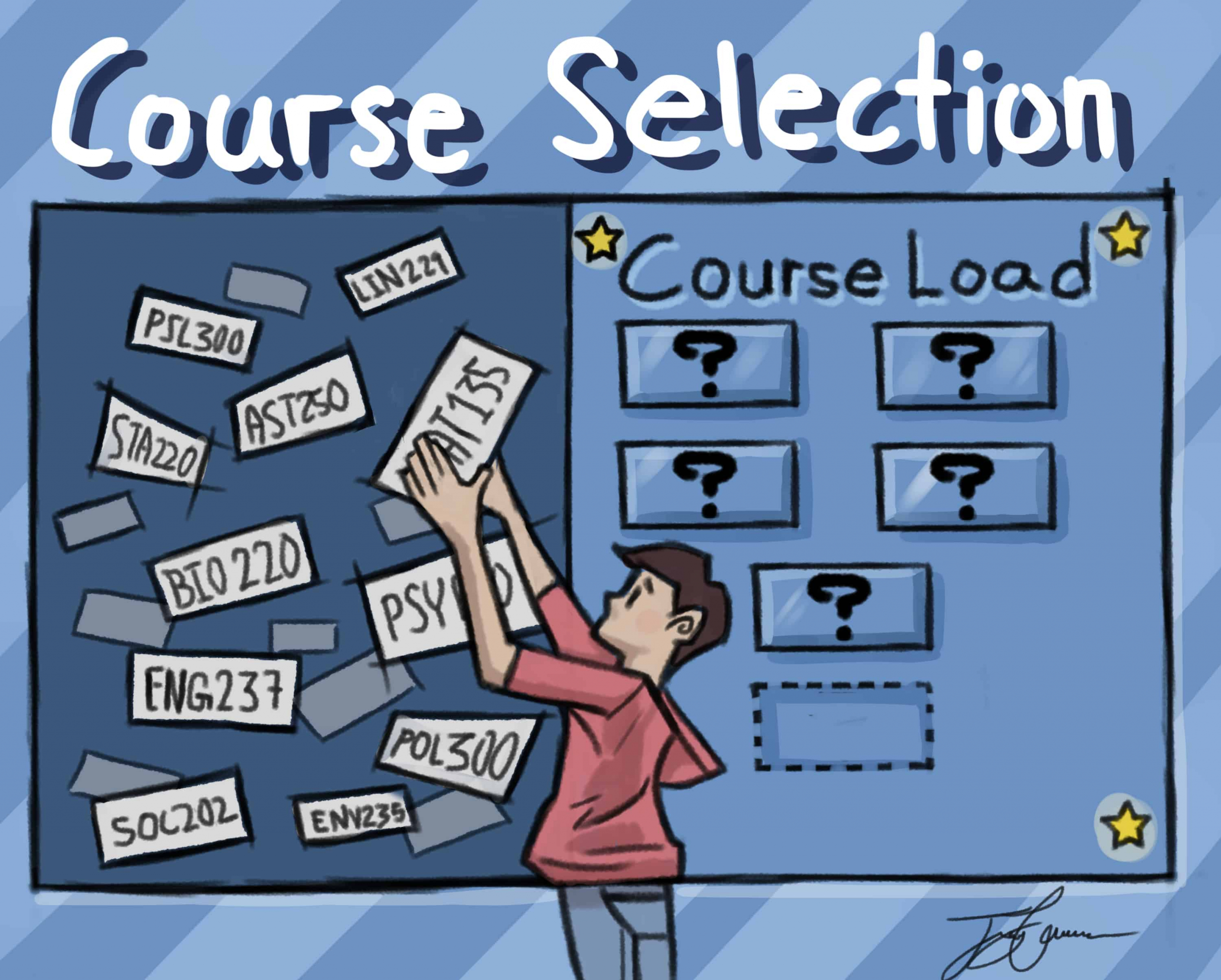With course enrolment start times taking place across dates in July, three students reflect on their past experiences and provide tips to upcoming course selectors. They discuss the difficulty of choosing a few courses from hundreds of options, the importance of considering the availability of space, and the challenges that come with balancing the course load with part-time work.
Narrowing down courses
U of T has so many great courses to choose from that perhaps too much choice becomes a burden. Of course, the most basic priority of us as students must be to fulfill program requirements which can fill most of our limited five to six credits per semester. Programs of Study (POSt) are meant to help you narrow down your studies so you can hone in on what you’re really passionate about, but even then some are far too varied or even too specific.
Take Global Health, for example: how is one to choose between studying world hunger, the effect of AIDS, and the history of dentistry? Even within a single program, it seems like there could be courses made about any individual topic, rendering it even more difficult to make the choices needed to fill our POSt.
On top of that, we need to somehow balance other personal interests and electives outside of our program. But how will we know what we’re passionate about if we don’t take the leap to explore entirely new topics? However, this is only idealistic thinking; with five to six courses to balance, it can be hard to keep up your GPA too. It is difficult to decide whether pursuing a course out of interest would really be preferable to a ‘bird’ course that could save your GPA, especially when paired with more difficult courses to fulfill your POSt.
You could always try taking six courses to maximize the learning experiences you could get from what U of T has to offer in lectures, if you’re really sure that you could handle the course load. Even just being on the waiting list of a sixth course warrants your college registrar dropping you an email to make sure you really thought this through. In any case, choosing from hundreds of courses to narrow down to only a few makes course selection just that much harder.
Casey Qian is a second-year Global Health and Physiology student at Woodsworth College.
Considering space
Course selection every summer is a time of nervous breakdowns and sudden panics — that is, if you approach it without preparations. The worst case scenario is if you forget to enroll into the prerequisite courses you need for the upcoming semester to get into your desired program in the subsequent year. You are then left trying to convince the head of the course department to give you another chance to change your courses before your semester even starts.
However, do not worry: all you need to consider as you head toward course selection is the availability of space. Each course is given a finite amount of space for students in which to enroll. But keep in mind: different programs or majors of study have different entry time to ACORN for course enrolment. Hence, it is important to remember whether you have priority access to desired courses or have to be waitlisted instead.
To share my memory of this time, I was completely unprepared and unaware of what courses I needed for my first year, or what courses would be able to fit in to my schedule of pre-enrolled courses. In addition, I was also unaware of when my enrolment time began, so by the time I was able to access ACORN, most of my courses of interest were either full or nearly full. Ultimately, I had to switch out of three courses during my first week to courses that weren’t really necessary for my program, because the initial courses were either too tedious or difficult for me.
Overall, remember that each course has a different amount of enrolment space and that each field of study has different timelines to enter ACORN. Preparation and research are paramount, or else the courses that you may badly need will only be available to you the next year.
Michael Phoon is a second-year Journalism student at UTSC.
Balancing school and work
Course selection for working students is like playing that Move the Block slide puzzle game — except winning means taking breadth courses you don’t have an interest in or cramming together awful work hours. The real kicker is when a tutorial or lecture time would work perfectly but is full.
Having a full course load and working two jobs, I’ve been fortunate that one allows me to work remotely most of the time. My bosses have deep empathy for students juggling multiple things at once, so when I drop the ball — which is inevitable — it’s not hard to pick it back up. But I know that other working students may not and do not have that privilege.
Unluckily, I’m also a commuter student and my commute is over two hours long, one way. In first year, I spent hours adding and deleting things from my enrolment cart, trying to craft the perfect schedule. This was before knowing what two-hour lectures and having to write countless papers in one week was like. Optimism got the best of me and I ended up taking three 9:00 am classes and missing half of them after midterms.
So, unless you’re super into an introduction to art history, maybe think twice. In retrospect, I’m glad that I learned that lesson in first year: summer optimism doesn’t translate well to the reality of the school year, and unless you absolutely have to, do not take a 9:00 am class.
Margaryta Ignatenko is a third-year Journalism student at UTSC.


